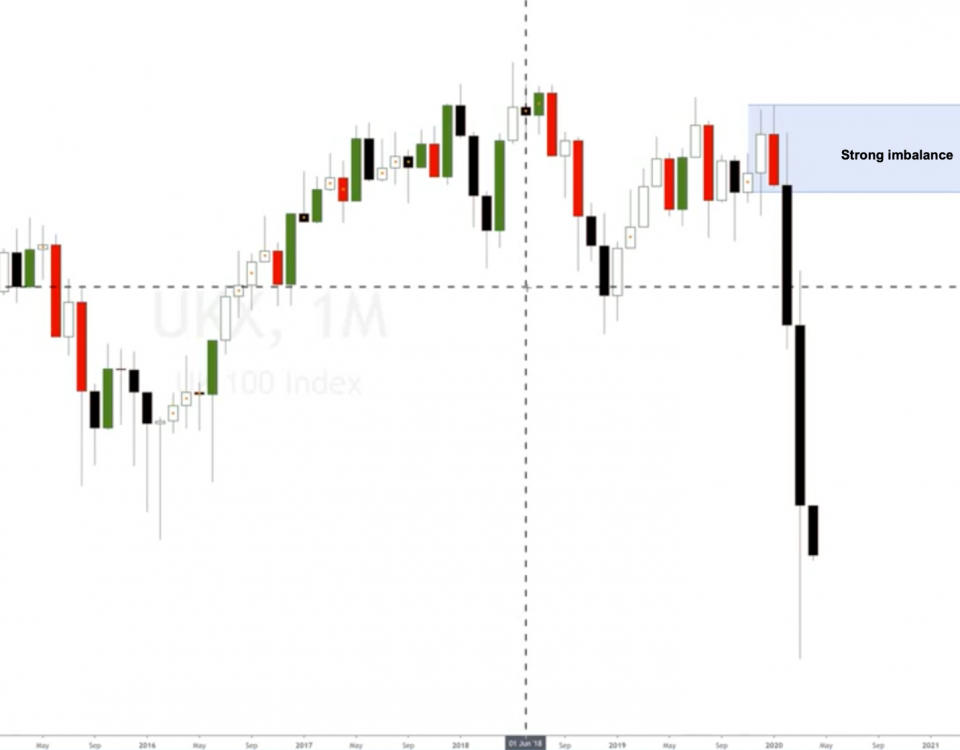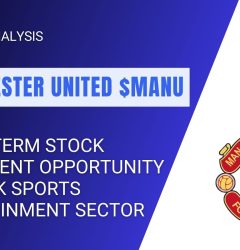12 Apr

Stock markets across Europe have had a strong sell-off for over two consecutive months, with the UK Footsie index (FTSE) dropping about 36% since last December 2019. This strong sell-off has affected most London UK FTSE stocks in the Footsie index, across the European market floors, and in all sectors and industries. The spread of the coronavirus is killing thousands of people in the UK, prompting the British government and most European governments to increase lockdown measures.
UK FTSE 100 index forecast
The FTSE 100 decreased about 36% since the beginning of 2020, according to trading on a contract for difference (CFD) that tracks this benchmark index from the United Kingdom. That’s a lot! However, the strong sell-off cannot be attributed exclusively to the coronavirus pandemic. We had a strong supply imbalance in control. The FTSE 100 was already dropping and reacting to that strong imbalance when the coronavirus COVID-19 started affecting the FTSE 100 index and stocks.
The question is, should we buy or sell UK FTSE 100 stocks? Watch the supply and demand video analysis for UK FTSE 100 Index and several London British stocks in the video below.
After a strong sell-off, we should expect a bigger retracement. Unsustainable moves in FTSE 100 stock price cannot be sustained long. A bigger correction must happen; it usually happens. It’s how the market works. In the video below, we do a long-term analysis of several stocks like IAG, Aviva (AV.), Lloyds Bank, Marathon Oil, Vodafone and others. All of them show strong bearish impulses and imbalances.
Footsie market video analysis
London UK stock market price action analysis
This is the kind of price action technical analysis you will learn in our trading community. You will learn how to locate new supply and demand imbalances and trade without using any indicators, no news, no fundamental analysis, no earnings announcements, no volume or VSA analysis. Just supply and demand imbalances.
Trading supply and demand imbalances is ideal for beginners and those with full or half-time jobs. You won’t need to stay in front of the computer all day long trying to move price action with your mind.
London UK market scenario
As supply and demand traders, we do not need to pay attention to the news, fundamentals or any earnings reports. Once a big timeframe imbalance has gained control, earnings do just the opposite and react strongly to those imbalances. Why do you see positive earnings and then the underlying stock drops like a rock, or a negative earnings announcement and the stock rallies like a rocket out of control? You are probably missing the fact that there are big imbalances in gaining control.
Unless you are doing very short-term trading and scalping, you should not worry about fundamentals or earnings announcements on London FTSE UK stocks.
You can use these imbalances to plan your trades in lower timeframes. Trading is just waiting for the right trigger points and scenarios to present themselves, this game has got a name and it’s called the waiting game. We need to patiently wait for the correct scenarios and setups to happen and wait for price to pullback or dip into the price levels we want to trade, in our case these price levels are made of supply and demand imbalances.
Join our supply and demand stock trading course if you want to learn how to trade using our supply and demand trading strategy.
There are several ways of buying stocks and futures. When trading stocks, you can buy shares of the underlying stock or use options strategies to go long or short at these specific supply and demand levels, long calls or long puts or spreads. You can even buy a CFD (contracts for difference) if you are in a country where it’s allowed.









